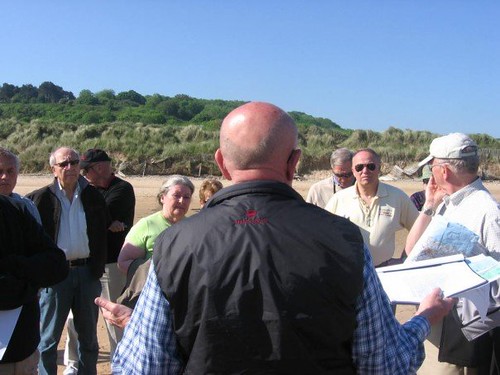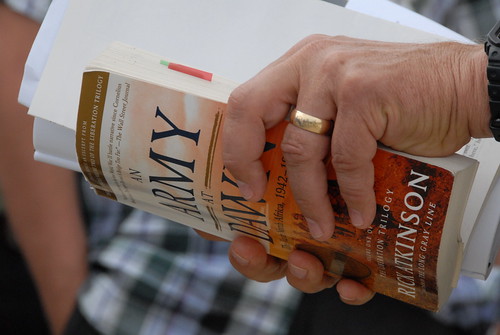 Sixty-Seven Years ago, on December 16th, 1944, the German military struck back against Allied forces in Belgium, the first major blow to the advance to Germany. During the battle, over a hundred members of the Norwich University community participated; former students who had graduated and advanced in the ranks of the U.S. military, and students who had graduated early to join the fight. They fought under some of the harshest conditions imaginable, and succeeded after a month of combat in the Ardennes. In 2010, I began a research project for the University, studying the role of the students and the school in the Battle before travelling overseas to Belgium. They played an incredible role in the battle, and undoubtably helped with many of the successes that would eventually lead to an Allied victory.
Sixty-Seven Years ago, on December 16th, 1944, the German military struck back against Allied forces in Belgium, the first major blow to the advance to Germany. During the battle, over a hundred members of the Norwich University community participated; former students who had graduated and advanced in the ranks of the U.S. military, and students who had graduated early to join the fight. They fought under some of the harshest conditions imaginable, and succeeded after a month of combat in the Ardennes. In 2010, I began a research project for the University, studying the role of the students and the school in the Battle before travelling overseas to Belgium. They played an incredible role in the battle, and undoubtably helped with many of the successes that would eventually lead to an Allied victory.
The Drive to the Meuse River
December 17th saw the beginnings of an organized response to the invasion: Generals Eisenhower and Bradley ordered the 7th Armored Division south from Holland and the 10th Armored Division from Patton’s command north, towards Bastogne. (Eisenhower 1995, 215) Additionally, the 101st and 82nd Airborne Divisions, both recuperating in Reims, France after the fight in Holland, were activated on the 17th. (Cole 1964, 305) The 101st was trucked to the key crossroads at Bastogne along with the 10th Armored, while the 82nd Airborne moved further north, to Werbomont and Trois Ponts.
As the German military was prevented from moving inwards from the top of the line at Monschau, the German military moved up from the center, aiming for Liege and Trois Ponts, and was focused on the town of St. Vith, where American forces had begun to dig in. This battle would become known as the ‘Fortified Goose Egg’. Two regiments of the 106th surrendered to German forces, while a third held their ground at St. Vith, with the 7th Armored Division moving in to their aid. At least one Norwich graduate was with the 7th Armored, 1st Lieutenant Perley Brainerd Jr, ‘40. The combined forces, which were reinforced by remnants of the 28th Infantry and 9th Armored Divisions in addition to several other scattered units, held their ground from the 17th as pitched fighting for the city began. (Toland 1999, 106)
By December 18th, the German military had pushed heavily into the region, some nearly as thirty miles into Allied territory. (Toland 1999, 97) Captain Albert Hicks and 1st Lieutenant Carl Hughes, were still located to the south of the 106th Infantry Division’s positions, where the situation became desperate: their mission changed from stopping the German advance to delaying them as much as possible. As the German military moved in towards Bastogne, the 28th worked to slow their advance, as US reinforcements arrived to contain them. (Eisenhower 1995, 253) Elements of the 9th Armored Division, with 2nd Lieutenant Olin C. Tosi ‘45, helped on the 17th, but ultimately, the 28th Infantry Division units fell apart under the German advance, allowing them to advance towards Bastogne.
However, because the German military relied on a strict timetable, the delaying actions of the units helped to stall German advance, allowing the 101st Airborne and the 10th Armored Divisions to move into Bastogne, where they were ordered to hold the crossroads at all costs.
At the same time on the 18th, the 3rd Armored Division moved into place between the Salm and Ourthe rivers, between the 84th Infantry Division and the 7th Armored Division, West of St. Vith. Lieutenant Colonel Elwyn W. Blanchard, '36 had only just returned to command a battalion within the 3rd Armored, having been recovering from wounds he sustained in France. He continued his command until he was wounded again.
1st Lieutenant Robert Christie ‘44 recalled his unit, the 33rd Armored Regiment, ordered into the fight, brought in by train, with little idea of where they were headed or what they were faced with:
It was not many days thereafter that I found myself travelling through Belgium in “Forty Hommes et 8 Cheveaux”, rolling stock where I damned near froze to death for three or four days and was only kept warm by occasional swigs of calvados bought at the trainside from the French. From the train, I recall travelling in a 6x6 deep through Belgium and seeing wrecked tanks and other vehicles along the way, and occasionally unrecovered and unburied German and American bodies strewn across the road, this being the area in the middle of the Ardennes salient (Battle of the Bulge) by the Germans. (Christie n.d.)
Shortly after his arrival to Belgium, Christie encountered a fellow Norwich alumnus during the battle, although not face to face:
The day I hit the 33rd, I was ushered into a candle-lit room. From the big, dark bed, a voice boomed from the stack of blankets about a foot thick: “Who in hell’s Christie?” I made an appearance, and the next thing I heard was a gruff command to take a brace in the middle of the room and sing ‘Norwich Forever’. About that time, I had a small suspicion that perhaps there could be a Norwich man in the crowd. Sure enough, it was Major ‘Duffy’ Quinn, ’34… Still haven’t seen Duffy’s face. He was so wrapped up in those blankets, I didn’t get the opportunity. (Lt. Bob Christie, '44, Gets Quinn Welcome 1945, 12)
Christie would go on to describe a Vermont winter as being a dozen times better what they were going through. He would later write a book about his experiences in the 2nd World War, in which he noted: “His chest suddenly tightened as he saw the partially displaced helmet from the sprawled body of a GI, the barrel of his rifle projecting upward out of the snow at a low angle. He suddenly realized what a dead American soldier really was.” (Christie n.d., 77) Christie’s experiences and his turn towards writing after the war come as no surprise when his experience with the Norwich University Record and the War Whoop are taken into consideration. (War Whoop 1947, 67)
Including Christie, eight Norwich men belonged to the 3rd Armored Division: Lieutenant Colonel Elwyn W. Blanchard, '36, Major Scott Gordon, '33, Major Duffy Quinn ‘34, Captain Charles J. Adams, '39, Captain George Riley, ’32, 1st. Lieutenant Arthur Curtis, '41, 1st Lieutenant Herman J. Lavin '33, 1st Lieutenant Charles Sellars, '47 and 2nd Lieutenant Richard P. Briggs, '42.
The battle for St. Vith at this point was “in full swing.” (Toland 1999, 106) The 3rd Armored Division met with the 82nd Airborne Division by mid-day on the 19th, when the 82nd began to move east, towards Trois Ponts, just to the northwest of St. Vith. By the 20th, they had set up a perimeter around Werbomont in all directions, while the 3rd was directed to move out as far south as Houffalize. (Cole 1964, 344-346)
On December 19th, the 26th Infantry Division moved to Luxembourg to help advance Northwest against the Germans moving on Bastogne, with Norwich members Captain Leonard E. Nysted, ’42, 1st Lieutenant Burton B. Fall Jr., ’44, and Corporal Bradford A. Cook Jr. ’44 along with the unit. (Cook n.d., 520) They attacked on the 21st at Rambrouch, Grosbous and to the Wiltz River, joining with the 4th Armored Division which contained Captain George Fairbanks ’39 and Private Charles Bailey, ’47.
For his actions throughout the Bulge, Fairbanks was awarded the Bronze Star:
Since [November 9, 1944], this unit has never wanted for supplies of any type so long as they were at all available. There is no limit to the extent to which Capt. Fairbanks will go to obtain the necessary supplies, even though this entailed many trips to rear areas at all hours and under all types of weather conditions. On numerous occasions, he has gone to company positions in an unarmored vehicle under enemy shelling to obtain a list of the daily needs.
Capt. Fairbanks was with the Fourth Armored Division when the crack tank outfit effected the historic relief of the besieged 101st Airborne Division in Bastogne, Belgium.
Along with the 4th Armored Division’s push, the 104th Infantry Division with John W. Howley, ’44, and 80th Infantry Division, with Joseph Caffrey Jr., ’48, this push absorbed some of the remaining members of the 28th Infantry division. By Christmas Day, the force moved to Arsdorf, Belgium, encountering heavy fighting, where they would be pushed back. They regrouped in January for a renewed push to the area. At some point during this engagement, John Howley ’44, would be captured and sent to a POW camp, from which he would escape three times.
On December 21st, Field Marshal Bernard Montgomery ordered a retreat from St. Vith, forfeiting the position. The 106th Infantry and the remnants of the other units pulled out during this withdrawal. Two things largely saved the units at St. Vith: the ferocity of the Allied defense around the city, and the readiness of the German field units, which had yet to receive their full strength by December 20th. Despite the failure to hold onto the positions, the actions at St. Vith helped to further slow the German advance.
Bastogne, December 20 - December 27
With the difficulties that the Germans faced with the defense of St. Vith, their focus shifted to the next set of crossroads, located at Bastogne. (Cole 1964, 306) General Eisenhower, over the protests of General Patton, ordered the 10th Armored North to the crossroads. The Division contained a number of Norwich men: Captain Phil Baird, ’38, Captain Dave Perrin, ’41, Captain, Marinus Van Kleef, ’41, Captain John R. McGauley, ’41, 2nd Lieutenant Wilburn Hardy, ’45, Corporal Joseph McCloskey, ’42, Joseph Haines Clarke ‘40, Captain Philip R. Calder, ‘41, Lieutenant. Hubert Shietinger, ’43, and Staff Sergeant Robert G. Buttinger ’48. One member of the unit, Captain McGauley, recounted in a letter to the Norwich Record of his experiences in the unit:
I have met several Norwich men over here so far. Most interesting were meetings during the ‘Bulge’. I was at Bastogne when the Germans started through, and in the tumult of action, I ran into Cap. Phil Baird, ’38. The last time I had seen him was when I was a freshman and was acting as an orderly for him. When the 4th Arm’d broke through to us, one of the first persons I met was Maj. Tom Churchill, ’40.
The only members of my class still with me are Capt. Dave Perrin, and Capt. Marinus Van Kleed, both of whom have been wounded, and since returned to duty. Capt. Joe McCloskey, ’42 and Lt. Hubert Shietinger, ’43, are in this outfit also. (Capt. John McGauley, '41, Names Norwich Men With Him At Bastogne 1945)
Joining the 10th Armored Division was the 101st Airborne Division, who drove towards Bastogne, reaching it on the 19th. An eventual member of the Norwich community, Howard Brosseau was a member of the 502nd Regiment of the 101st Airborne, which supported the north-northwest shoulder around the city. The American units around Bastogne dug in securely, with the mission to hold the town at all costs. (Eisenhower 1995, 318) The German military was aware that the US had moved in two of their airborne divisions to the center of the attack, but failed to anticipate how quickly they would set up around the city, and were forced to react as they came into contact with the three combined-arms task forces supplied by the 10th Armored Division that were sent along the roads leading out of the city. The Americans were able to hold off the Germans for the remainder of the 19th, but by the 20th, they were cut off by German forces. Over the next couple of days, they would repel attacks from all sides in one of the most dramatic engagements of the battle, receiving supplies by air on the 23rd and 24th before being cut off again by poor weather on Christmas day. By the next day, units from the 4th Armored moved in and helped hold open supply lines, likely aided by Major Churchill and Captain Fairbanks.
With the breakthrough of the 4th Armored, the siege of Bastogne was over. Like at St. Vith, the allied actions helped to further slow the onslaught, denying the German military a vital crossroads that they required to support their objectives to the west. (Cole 1964, 480-481)
Monday: the 2nd Armored Division and Ciney





 I've sold a new article to the Norwich Record, titled Out of the Ashes: How an Irish Episcopal Priest Saved Norwich University. This was one of the projects that I was working on last fall, and shortly after the start of the New Year, I submitted my final draft. The research phase was interesting: going through archives and piecing together a rather interesting and diverse man that was a central, but forgotten figure in Norwich University and local Vermont history.
I've sold a new article to the Norwich Record, titled Out of the Ashes: How an Irish Episcopal Priest Saved Norwich University. This was one of the projects that I was working on last fall, and shortly after the start of the New Year, I submitted my final draft. The research phase was interesting: going through archives and piecing together a rather interesting and diverse man that was a central, but forgotten figure in Norwich University and local Vermont history. Sixty-Seven Years ago, on December 16th, 1944, the German military struck back against Allied forces in Belgium, the first major blow to the advance to Germany. During the battle, over a hundred members of the Norwich University community participated; former students who had graduated and advanced in the ranks of the U.S. military, and students who had graduated early to join the fight. They fought under some of the harshest conditions imaginable, and succeeded after a month of combat in the Ardennes. In 2010, I began a research project for the University, studying the role of the students and the school in the Battle before travelling overseas to Belgium. They played an incredible role in the battle, and undoubtably helped with many of the successes that would eventually lead to an Allied victory.
Sixty-Seven Years ago, on December 16th, 1944, the German military struck back against Allied forces in Belgium, the first major blow to the advance to Germany. During the battle, over a hundred members of the Norwich University community participated; former students who had graduated and advanced in the ranks of the U.S. military, and students who had graduated early to join the fight. They fought under some of the harshest conditions imaginable, and succeeded after a month of combat in the Ardennes. In 2010, I began a research project for the University, studying the role of the students and the school in the Battle before travelling overseas to Belgium. They played an incredible role in the battle, and undoubtably helped with many of the successes that would eventually lead to an Allied victory.
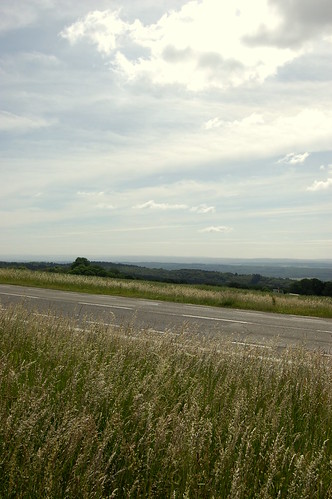 Sixty-Seven Years ago, on December 16th, 1944, the German military struck back against Allied forces in Belgium, the first major blow to the advance to Germany. During the battle, over a hundred members of the Norwich University community participated; former students who had graduated and advanced in the ranks of the U.S. military, and students who had graduated early to join the fight. They fought under some of the harshest conditions imaginable, and succeeded after a month of combat in the Ardennes. In 2010, I began a research project for the University, studying the role of the students and the school in the Battle before travelling overseas to Belgium. They played an incredible role in the battle, and undoubtably helped with many of the successes that would eventually lead to an Allied victory.
Sixty-Seven Years ago, on December 16th, 1944, the German military struck back against Allied forces in Belgium, the first major blow to the advance to Germany. During the battle, over a hundred members of the Norwich University community participated; former students who had graduated and advanced in the ranks of the U.S. military, and students who had graduated early to join the fight. They fought under some of the harshest conditions imaginable, and succeeded after a month of combat in the Ardennes. In 2010, I began a research project for the University, studying the role of the students and the school in the Battle before travelling overseas to Belgium. They played an incredible role in the battle, and undoubtably helped with many of the successes that would eventually lead to an Allied victory. Sixty-Seven Years ago, on December 16th, 1944, the German military struck back against Allied forces in Belgium, the first major blow to the advance to Germany. During the battle, over a hundred members of the Norwich University community participated; former students who had graduated and advanced in the ranks of the U.S. military, and students who had graduated early to join the fight. They fought under some of the harshest conditions imaginable, and succeeded after a month of combat in the Ardennes. In 2010, I began a research project for the University, studying the role of the students and the school in the Battle before travelling overseas to Belgium. They played an incredible role in the battle, and undoubtably helped with many of the successes that would eventually lead to an Allied victory.
Sixty-Seven Years ago, on December 16th, 1944, the German military struck back against Allied forces in Belgium, the first major blow to the advance to Germany. During the battle, over a hundred members of the Norwich University community participated; former students who had graduated and advanced in the ranks of the U.S. military, and students who had graduated early to join the fight. They fought under some of the harshest conditions imaginable, and succeeded after a month of combat in the Ardennes. In 2010, I began a research project for the University, studying the role of the students and the school in the Battle before travelling overseas to Belgium. They played an incredible role in the battle, and undoubtably helped with many of the successes that would eventually lead to an Allied victory. Sixty-Seven Years ago, on December 16th, 1944, the German military struck back against Allied forces in Belgium, the first major blow to the advance to Germany. During the battle, over a hundred members of the Norwich University community participated; former students who had graduated and advanced in the ranks of the U.S. military, and students who had graduated early to join the fight. They fought under some of the harshest conditions imaginable, and succeeded after a month of combat in the Ardennes. In 2010, I began a research project for the University, studying the role of the students and the school in the Battle before travelling overseas to Belgium. They played an incredible role in the battle, and undoubtably helped with many of the successes that would eventually lead to an Allied victory.
Sixty-Seven Years ago, on December 16th, 1944, the German military struck back against Allied forces in Belgium, the first major blow to the advance to Germany. During the battle, over a hundred members of the Norwich University community participated; former students who had graduated and advanced in the ranks of the U.S. military, and students who had graduated early to join the fight. They fought under some of the harshest conditions imaginable, and succeeded after a month of combat in the Ardennes. In 2010, I began a research project for the University, studying the role of the students and the school in the Battle before travelling overseas to Belgium. They played an incredible role in the battle, and undoubtably helped with many of the successes that would eventually lead to an Allied victory.
 Each year, the Colby Symposium awards the Colby Award to a first notable book from an author that deals fundamentally with the nature of warfare and contributes substantially to the field. During the awards dinner this year, executive director and Norwich University Alum, Carlo D'Este said that it was rare that the entire committee universally agrees on a single book, but that this was the case for the 2011 prize, going to Karl Marlantes, with his first acclaimed novel, Matterhorn.
Each year, the Colby Symposium awards the Colby Award to a first notable book from an author that deals fundamentally with the nature of warfare and contributes substantially to the field. During the awards dinner this year, executive director and Norwich University Alum, Carlo D'Este said that it was rare that the entire committee universally agrees on a single book, but that this was the case for the 2011 prize, going to Karl Marlantes, with his first acclaimed novel, Matterhorn.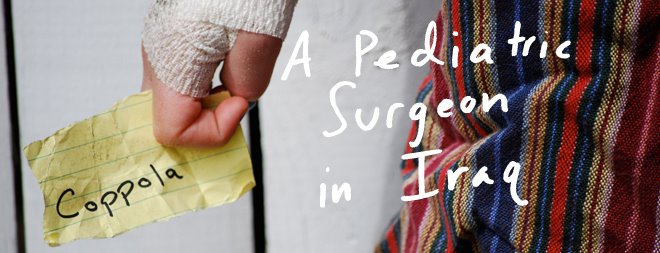


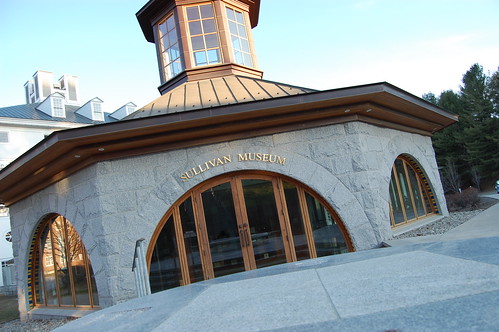 Earlier today, the former Chief of Staff of the U.S. Army, Gen. Gordon Sullivan, spoke at the museum at Norwich University's campus that bears his name for a brief talk to students. As he opened, he noted that he didn't have a plan for what he wanted to talk about, but pointed out objects in one of the rooms that related to his experience within the time that he had spent in the military. Over the course of his 36 year career, Sullivan has seen a lot: he volunteered to go to Vietnam and served for a couple of tours there, while his career culminated in his presiding over the transition of the U.S. Army after the fall of the Soviet Union, and the massive changes that came as a result of that. A number of points that Sullivan brought up stuck with me over the course of his talk.
Earlier today, the former Chief of Staff of the U.S. Army, Gen. Gordon Sullivan, spoke at the museum at Norwich University's campus that bears his name for a brief talk to students. As he opened, he noted that he didn't have a plan for what he wanted to talk about, but pointed out objects in one of the rooms that related to his experience within the time that he had spent in the military. Over the course of his 36 year career, Sullivan has seen a lot: he volunteered to go to Vietnam and served for a couple of tours there, while his career culminated in his presiding over the transition of the U.S. Army after the fall of the Soviet Union, and the massive changes that came as a result of that. A number of points that Sullivan brought up stuck with me over the course of his talk.